Covent Garden in the 20th Century
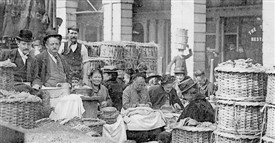
Shelling peas c1910
Westminster City Archives
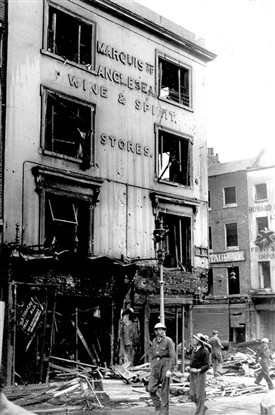
A bomb hits the Marquis of Anglesey Wine & Spirit store on the corner of Russell Street and Bow Street during the Blitz in 1940
Covent Garden Community Assocation
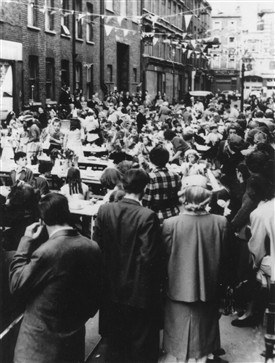
Coronation Party 1953 in Betterton St.
Westminster City Archives

Covent Garden market c1910
Westminster City Archives
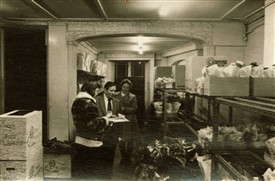
Covent Garden Market c1970s
Penny Saunders
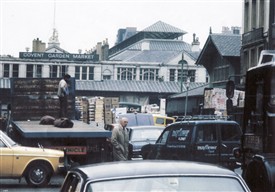
Last days of the market 1974
Penny Saunders
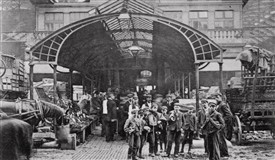
Young porters take a moment to pose for the camera c1910
Westminster City Archives
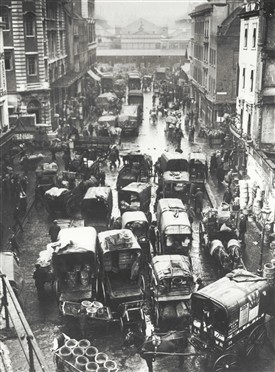
Traffic congestion Covent Garden c1930
Westminster City Archives
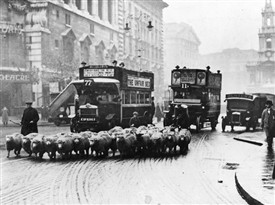
Sheep along Charing Cross Road were not an uncommon site in the early 20th century
Westminster City Archives
By the early 1900s the market had expanded to its limit. Two glass and ironwork flower market halls had been added. The Jubilee Market housed two trading floors for imported fruit, and there was a fourth market building on Russell Street. Elegant old houses around the Piazza had been roughly modified to make way for vehicles and stock. Even the Woodyard brewery and its warehouses were given over to storage for fresh produce in 1905. The market operated from Midnight to lunchtime, the streets and pubs buzzing with activity. By the afternoon the Piazza area would become strangely tranquil, until the theatre goers came out for the evening.
Between 1913 and 1945 the Bedfords gradually sold off their property in Covent Garden. They felt that the market needed some form of state oversight, but the authorities were unwilling to take it over so it was acquired by the Beecham estate.
The area was heavily bombed in 1940-41, and again people lost their homes. Like much of London, the population suffered greatly. What was left of the community grew stronger as it pulled together. However, numbers were dropping as the housing fabric deteriorated. In the 1901 census the population had been 9,000, but by 1960 Covent Garden was home to just 4,000 people and 90% of the housing stock in Seven Dials had lain empty since the war.
Those residents who hung on lived in generally poor conditions, mainly in the private rented sector. Even in the mid-1970s many dwellings had only shared toilet and kitchen facilities, and over half did not have their own bathrooms.
But things were busy in Covent Garden, with about 1,700 firms and over 30,000 workers. Although many local people were poor, they could hold down more than one job without going out of the area. There were 17 theatres, 2 opera houses, and all their supporting trades from scenery construction to costume making. Two national newspapers and 27 publishing houses were based here. There were 4 hospitals and 6 churches.
The market flourished, despite being cramped. By the 1960s it employed 5,000 people and traded £75 million in produce per year.
The idea of moving the market had first been seriously proposed in 1921. The streets had been congested with barrows and carts for years, expansion was difficult, and a move to St. Pancras was suggested. The Abercrombie plan of 1943 revived the idea of a move, as motorised vans and lorries jammed the area. These plans were never enacted. But in 1961 something far bigger than just moving the market loomed…